About Cyprus
Cyprus [in Greek: Κύπρος – Kipros], officially the Republic of Cyprus is the third largest island in the Mediterranean, with a rich, turbulent history stretching back to antiquity. A story past 10,000 years long has seen civilizations come and go, from Alexander the Great to Queen Cleopatra of Egypt, who stake their claim here.
The island of beauty
Aphrodite, the Greek goddess of beauty and love was born here. According to Greek mythology, Aphrodite was born from the “aphros” (‘sea foam’); Aphrodite arose (hence her name, meaning ‘foam-arisen’) and floated ashore on a scallop shell. This iconic representation of Aphrodite as a mature “Venus rising from the sea” (Venus Anadyomene) was made famous in a much-admired painting by Apelles, now lost, but described in the Natural History of Pliny the Elder. The theme persisted in art through the middle ages with universally recognised works of art like “The birth of Venus” by Botticelli.
Cyprus is the third largest island in the Mediterranean, after Sicily and Sardinia, with an area of 9.251 sq. kms (3.572 sq. miles).
It is situated at the north-eastern corner of the Mediterranean, at a distance of 300 km north of Egypt. The Greek island of Rhodes lies 360 km to the north-west.
Cyprus’ coastal line is indented and rocky in the north with long sandy beaches in the south. The north coastal plain, covered with olive and carob trees, is backed by the steep and narrow Pentadaktylos mountain range of limestone, rising to a height of 1.042 m. In the south, the extensive mountain massif of Troodos, covered with pine, dwarf oak, cypress and cedar, culminates in the peak of Mount Olympus, 1.953 m. Between the Troodos range and the Pentadaktylos mountain range lies the fertile plain of Messaoria. Arable land constitutes 46.8 per cent of the total area of the island. There are no rivers, only torrents which flow after heavy rain.
Cyprus is a modern country that combines European culture with ancient enchantment. One of the benefits of being a Mediterranean island is plentiful sunshine throughout the year and Cyprus is no exception. In fact, Cyprus epitomizes the ideal weather of the region with sunny days and fine temperatures almost every day. Extremes of temperatures are rare, meaning Cyprus has something to offer every month of the year, whether it’s swimming (as late as November) or enjoying cultural sites and festivals (all year long).

Finikoudes Beach
Finikoudes beach is located in the town of Larnaca and is considered as one of the most famous beaches in southern Cyprus. The heart of the town is just behind the beach, and is divided from the shore by the coast road, Athenon Avenue.
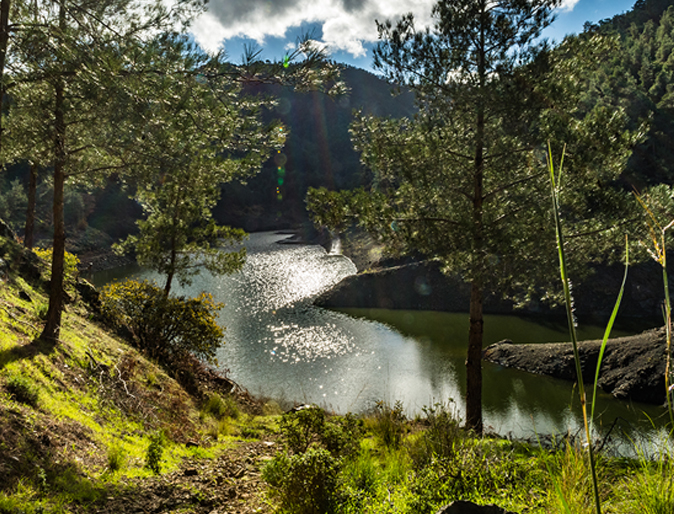
Xyliatos Dam
The Xyliatos dam nature trail is a medium difficulty trail, 3,8 kilometres long. The first 15-20 minutes of the hike are the most demanding, as the route follows an uphill direction, but it rewards you with magnificent views.
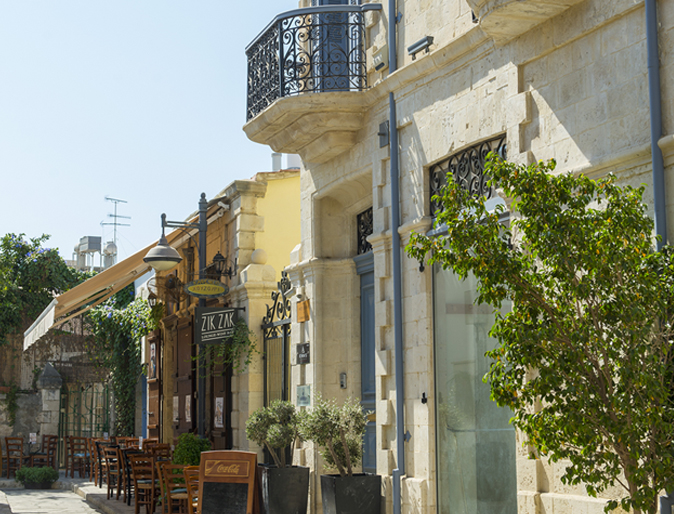
Old Town of Limassol
The Old Town of Limassol comprises a series of narrow streets branching out from the city’s old fishing port. Home to busy shopping streets and intriguing historic attractions, this vibrant area of the city is equally popular with locals and tourists.
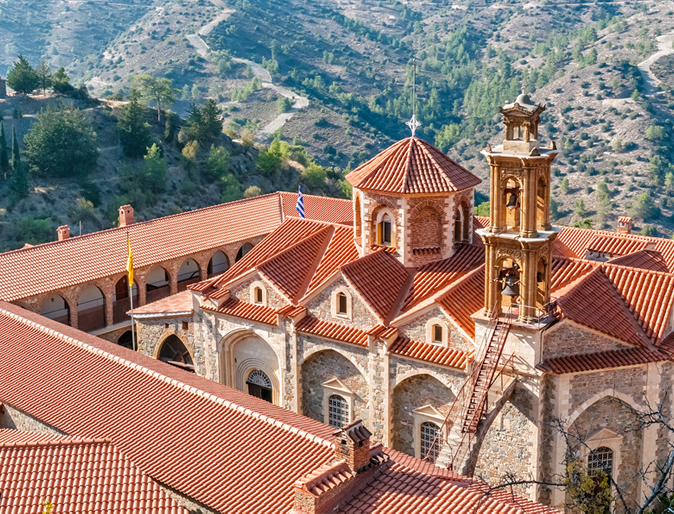
Machairas Monastery
Machairas Monastery is a historic monastery dedicated to the Virgin Mary located about 40 km from the capital of Cyprus, Nicosia. It lies at an altitude of about 900 m and was founded at the end of the 12th century close to the current village of Lazanias.
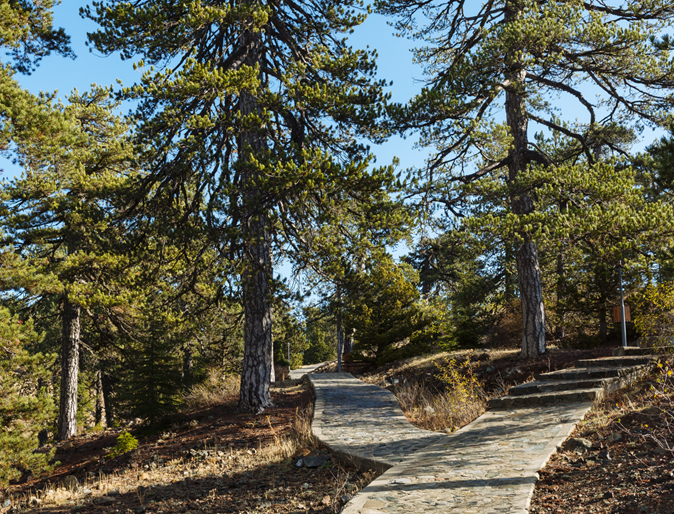
Troodos mountains
The Troodos mountains are known worldwide for their geology and the presence of an undisturbed ophiolite sequence, the Troodos Ophiolite. These mountains slowly rose from the sea due to the collision of the African and European tectonic plates, a process that eventually formed the island of Cyprus.
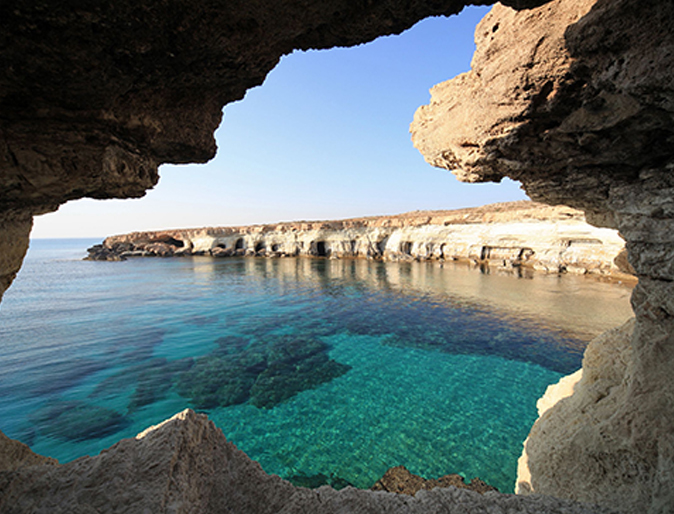
Blue Lagoon, Akamas
The blue lagoon is a shielded bay where the water is usually warmer than the rest of the area. It is an amazing location and the crystal waters in this bay in the Akamas peninsula give you the ability to see the sea depths. The blue lagoon bay is sandy and not very deep, perfect for relaxing in a natural swimming pool..
Demography
The population of the Republic of Cyprus is 938.400 (2014) of whom 694.700 belong to the Greek Cypriot community, (74%), 91.400 (9,8%) to the Turkish Cypriot community (estimate) and 152.300 (16,2%) are foreign citizens residing in Cyprus. The language of the Greek Cypriot community is Greek and the community adheres predominantly to the Autocephalous Greek Orthodox Church of Cyprus. The language of the Turkish Cypriot community is Turkish and the members of the community are Sunni Muslims.
History
The history of Cyprus is one of the oldest recorded in the world and its historical significance is disproportionate to its small size. The first signs of civilisation date to the ninth millennium B.C. The earliest known foreign settlements on the island were mainly of Phoenicians and Greeks, with Phoenician culture dominating the island’s eastern and southern parts. As a strategic location in the Middle East, it was subsequently occupied by several major powers, including the empires of the Assyrians, Egyptians, and Persians, from whom the island was seized in 333 BC by Alexander the Great and at which point Greek culture began to dominate. Subsequent rule by Ptolemaic Egypt, the Roman Empire, the Byzantines, Arab caliphates for a short period, the French Luisignan dynasty, and the Venetians, was followed by over three centuries of Ottoman control. Cyprus was placed under British administration in 1878 until it was granted independence in 1960.
Cyprus occupies an important role in Greek mythology being the birthplace of Aphrodite and Adonis, and home to King Cinyras, Teucer and Pygmalion.
The island figures prominently in the early history of Christianity, being the first province of Rome to be ruled by a Christian governor in the first century and providing a backdrop for stories in the New Testament.
